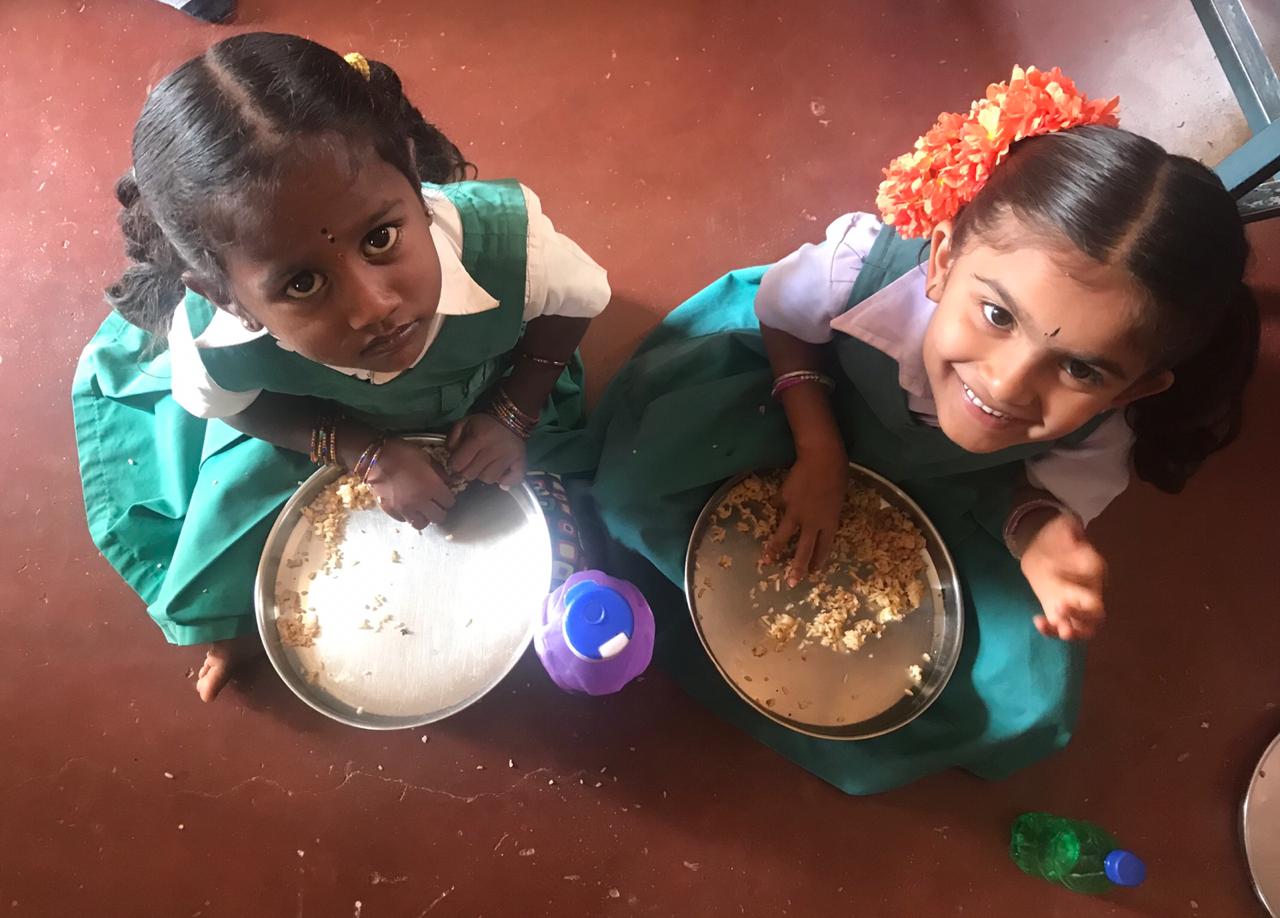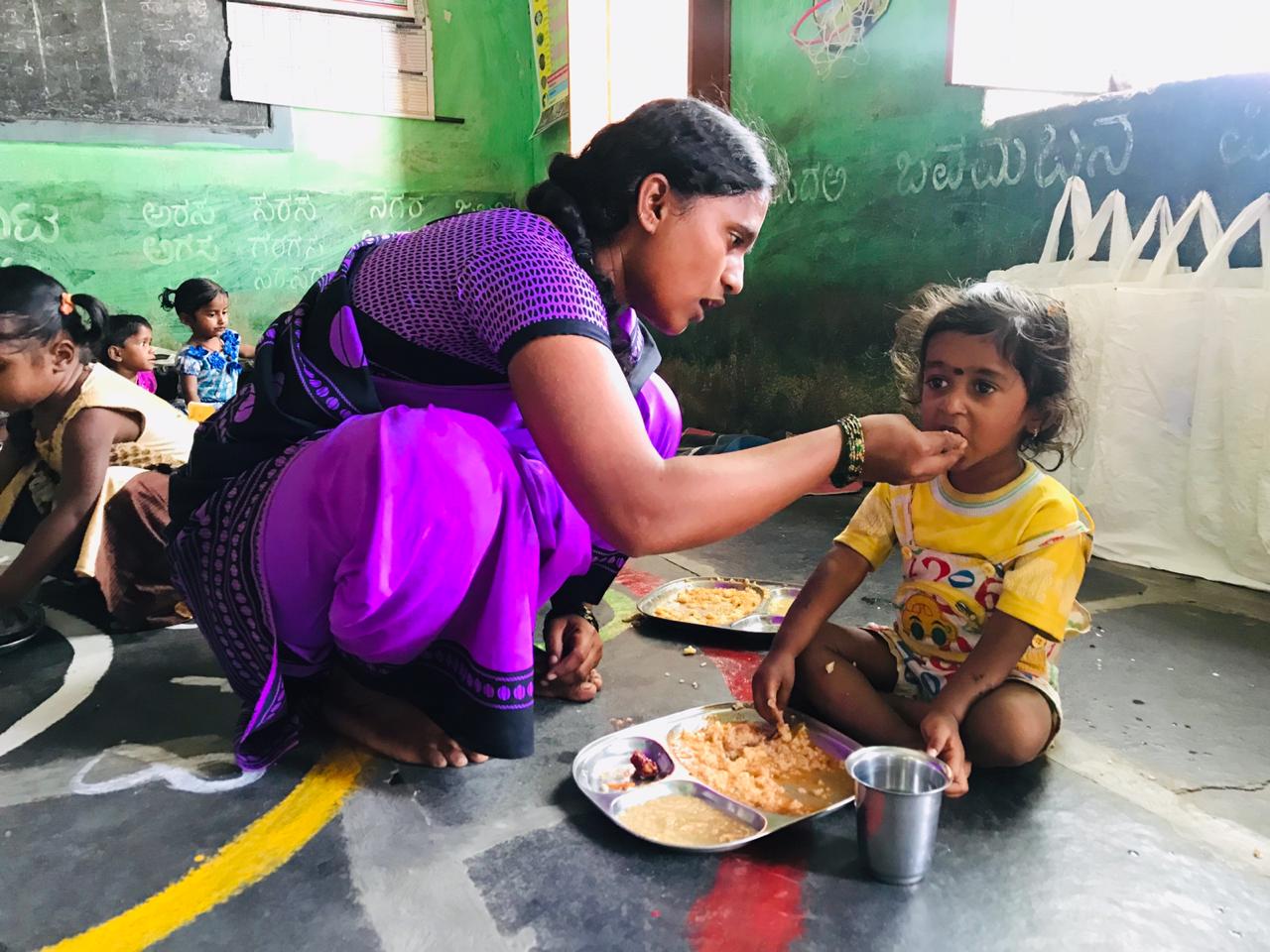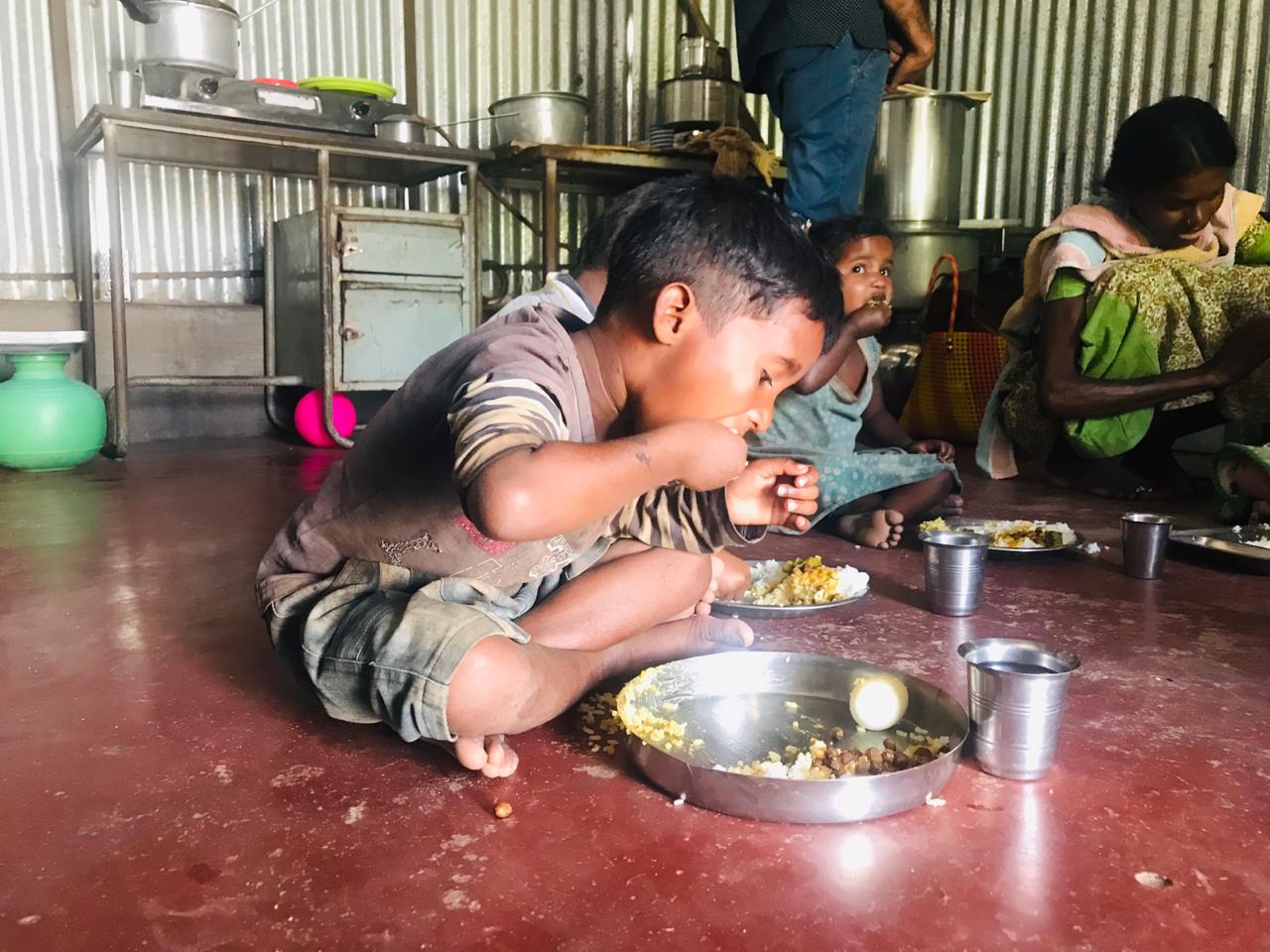Chhattisgarh reopens its anganwadis to provide daily hot nutritious meals
Chhattisgarh has become the first state in the country to reopen its anganwadi centres amid the COVID-19 to offer health and nutrition services to kids and women


Anganwadis support the nutritional needs of at least 158 million under-six kids in India. Photo: Nidhi Jamwal
After remaining shut for almost half a year, 55,000 anganwadis in Chhattisgarh reopened on September 7 to provide hot nutritious meals and health services to 1.5 million children under the age of six years, and 0.5 million pregnant and lactating women registered with these pre-school, non-formal education centres across the state. Due to the coronavirus disease (COVID-19) pandemic, anganwadis and educational institutes across the country are shut since March this year. These anganwadis support the nutritional needs of at least 158 million under-six kids in the country. Amid the shutdown, though the states were providing dry ration to the beneficiary kids and women, public health experts had warned of the far-reaching health impacts.
Chhattisgarh has now become the first state to reopen its anganwadis to provide daily hot, nutritious meals to kids and women, a move welcomed by the Right To Food Campaign activists and those working to address malnutrition. An order to this effect was issued on September 2 by the state’s Department of Women and Child Development, a copy of which is with Gaon Connection. The anganwadis in the state are shut since March 14. This move to reopen the centres has also timed well with the third Rashtriya Poshan Maah, or the national nutrition month of September 2020, as designated by the Indian government to promote nutrition in women and kids.

Welcoming the recent move of the Chhattisgarh government, Gagan Bhai Paikra, a Right to Food activist working with the tribal communities in Bastar told Gaon Connection: “The families in the villages are so poor that they don’t have enough to feed themselves at home and rely on government’s assistance. Dry ration was being provided to the children at home but was being consumed by everyone in the family and not just children, so opening up of anganwadis will ensure nourishment of the children.”
Job Zachariah, chief of UNICEF in Chhattisgarh, also tweeted and appreciated the re-opening of 55,000 anganwadis that are expected to provide hot cooked meals to 1.5 million children and 0.5 million pregnant mothers on a daily basis in the state. He also marked this step would help achieve the goals of nutrition, immunisation and antenatal care of pregnant women and prevent child death.
As part of its recent national survey to understand the impact of COVID19 lockdown on the health of pregnant women and children in rural India, Gaon Connection found 45 per cent rural households with pregnant women, spread across 23 states, either did not receive dry ration during the lockdown, or could not confirm it with certainty. Similarly, 46 per cent respondent households with kids claimed they did not receive any dry ration for children. In Chhattisgarh, 86 per cent respondent households with kids said their kids received dry ration during the lockdown.

As per the NITI Aayog data, 37.60 per cent children of age below five years in Chhattisgarh suffer from malnutrition, and 41.50 per cent girls and mothers in the state suffer from anaemia. However, there are reports claiming a significant decline by 13.79 per cent in malnourishment in the state during the span of six months from October 2019 to March 2020, after the launch of Mukhyamantri Suposhan Yojana.
But, lack of daily nutrition due to the pandemic can worsen malnutrition in the state. And the September 2 order of the Department of Women and Child Development notes that the World Health Organization and the United Nations Children’s Fund have been warning against an increase in malnutrition due to the lockdown. Whereas the Central government has ordered closure of all educational institutes, such as school, colleges, training and coaching centres, till September 20 this year, there is no mention of the anganwadis.
Hence, the Chhattisgarh government has gone ahead and reopened these centres to provide health and nutrition services by following proper norms of physical distancing and hygiene. The buildings of anganwadi centres are to be sanitised daily, every child and worker to mandatorily undergo thermal screening and sanitisation by soap before entering the premises. In order to ensure no more than 15 people are present in the anganwadi centre at one point of time, the beneficiaries would be called in batches. Mask is a necessity for all and a distance of six feet is to be maintained. In areas where there are chances of high malnutrition, tiffin services may be provided.

Activists in Chhattisgarh had also been putting pressure on the state government to reopen the anganwadis and provide hot cooked meals to the beneficiaries. Earlier this year, the Right to Food activists in the state filed a public interest litigation (PIL) in the High Court of Chhattisgarh, Bilaspur, regarding opening of the anganwadis.
“During the COVID lockdown, the regular food menu wasn’t provided to the beneficiaires. Instead there was a supply of ready to eat, take home ration powder,” Sangeeta Sahu, one of the petitioners and a Right to Food activist based in Chhattisgarh told Gaon Connection. “The supply of these packets was delayed in many places as the powder is made by local self-help groups who faced problems in manufacturing higher quantities. We suggested provision of food items such as rice, dal, oil, etc as was being given under mid-day meals,” she added.
She also pointed towards the necessity to include eggs in the meals provided at the anganwadis and mid-day meals, which can act as a supplement. “A lot of studies by UNICEF show there are chances of malnutrition worsening in kids as well as pregnant and lactating women, so it will be a good step if the state government also includes eggs in the regular meals,” she said.

Speaking on why hot meals served at anganwadis were better than take-home dry ration, Sahu said: “Take-home rations didn’t provide complete nutrition. We spoke to a few beneficiaries who said such ration packets were good only as snacks, not proper lunch. They prefered hot cooked meals over dry rations.”
Taking a cue from Chhattisgarh, activists in other states are also demanding restarting hot meal services of anganwadis. “It’s necessary that anganwadis open up so that the beneficiaries can be provided with better nourishment. Though pregnant and lactating women, and parents of the children can either avail dry ration through doorstep delivery or go and collect it on their own, immunisation has stopped completely. Moreover, weighing of children is also not taking place, which needs to start immediately,” Sameet Panda, a lead member of the Right to Food Campaign, Odisha, told Gaon Connection.
The Odisha government had already included eggs as a part of the meals long back, but inclusion of milk in the meal is a good idea to fulfill additional nutritional needs, he added.
With Chhattisgarh taking the lead in trying to meet the nutritional needs of its children and women during the pandemic, will other states follow?

